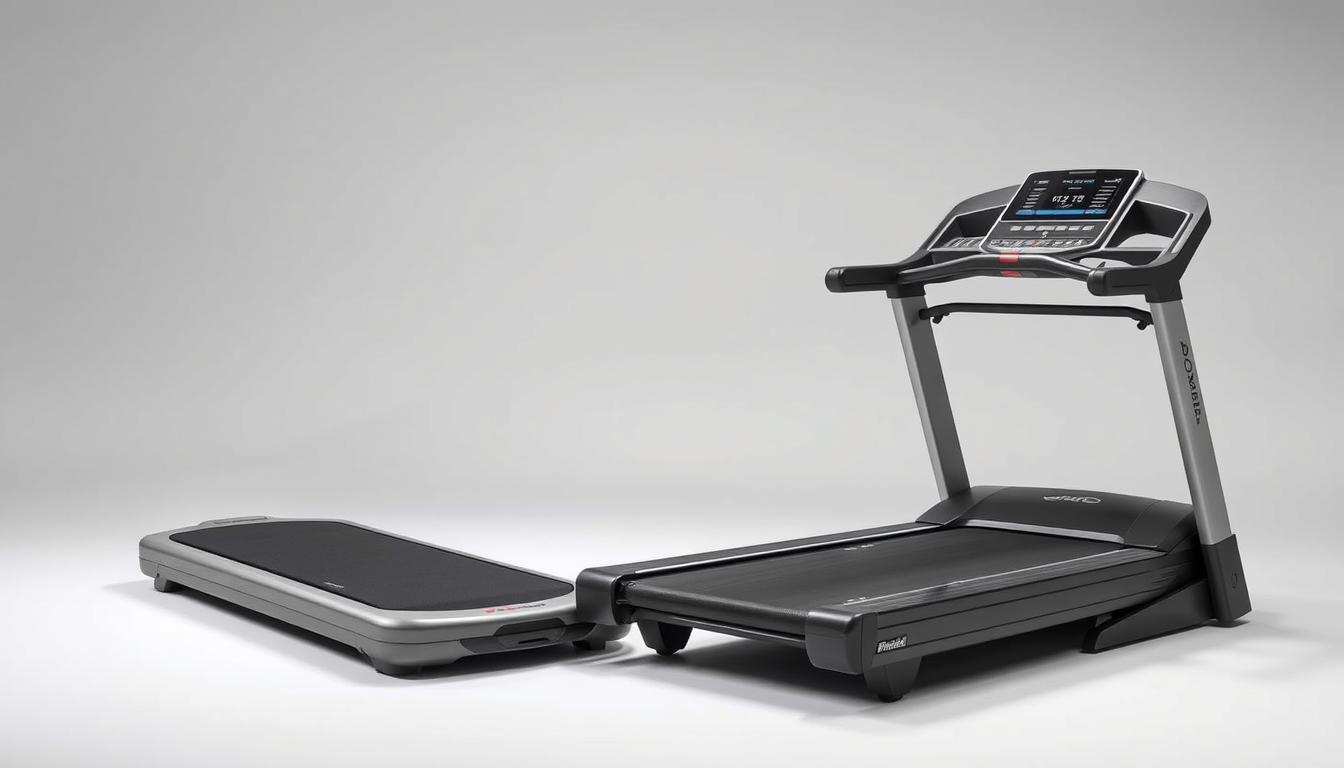Did you know that over 50% of home fitness equipment goes unused within the first year? Choosing the right gear can make all the difference. Whether you’re tight on space or crave intense workouts, understanding your options helps you stay committed.
This post contains affiliate links. If you purchase through these links, I may earn a small commission at no extra cost to you. Learn more here.
At Garage Gym Reviews, we tested popular models like the NordicTrack 1750 and WalkingPad P1. Our goal? To help you decide based on space, budget, and fitness goals. Compact designs suit small apartments, while advanced features cater to serious runners.
Home gym enthusiasts and remote workers alike need equipment that fits their lifestyle. Let’s break down the key features so you can invest wisely.
Key Takeaways
- Space-saving designs work best for small homes or offices.
- Budget-friendly options exist for both walking pads and treadmills.
- Workout intensity varies—pick what matches your fitness level.
- Consider noise levels if you share living or working spaces.
- Advanced features like incline settings add versatility.
Introduction
Modern life moves fast, but your health shouldn’t take a backseat. In 2022, 43% of Canadians prioritized well-being improvements—a trend mirrored globally. Whether you’re juggling work or family, home exercise solutions bridge the gap between busy schedules and fitness goals.
Walking, often overlooked, is a powerhouse for heart health and stress relief. Studies from Verywell Health show it lowers blood pressure and boosts mood. Yet, outdoor routines aren’t always practical. City noise or rural distances can derail consistency.
That’s where compact tools like a walking pad or full-sized treadmill shine. They adapt to your space and pace. This guide helps you match equipment to your lifestyle—because the best workout is the one you’ll actually use.
What Is a Walking Pad?
Small spaces demand smart fitness choices—enter the walking pad. This ultra-compact machine strips away the bulk of traditional treadmills, offering a streamlined way to stay active. Think of it as a slimmed-down sibling, designed to slip into corners or under furniture when not in use.

Definition and Design
A walking pad typically lacks a console, relying on remote or sensor controls. Models like the WalkingPad P1 measure just 56 inches long—shorter than most couches. Foldable options, such as the Redliro Walker, tuck vertically against a wall, freeing up floor space.
Modern features include auto-speed sensors. Step on, and the belt adjusts to your pace. No buttons needed. Weight capacities hover around 220–250 lbs, so check specs if you’re closer to the limit.
Primary Uses
These devices shine for low-impact movement. Walk while answering emails? The MotionGrey Eco Slim pad fits neatly under a standing desk. Prefer leisurely strolls during TV time? Unfold it in minutes. You’ll appreciate how it adapts to your routine without demanding extra room.
What Is a Treadmill?
For decades, treadmills have anchored home gyms with reliable performance. Unlike compact alternatives, these machines serve as complete cardio stations with upright consoles and sturdy frames. The NordicTrack 1750 exemplifies this—supporting 400 lbs while reaching 12 MPH speeds.
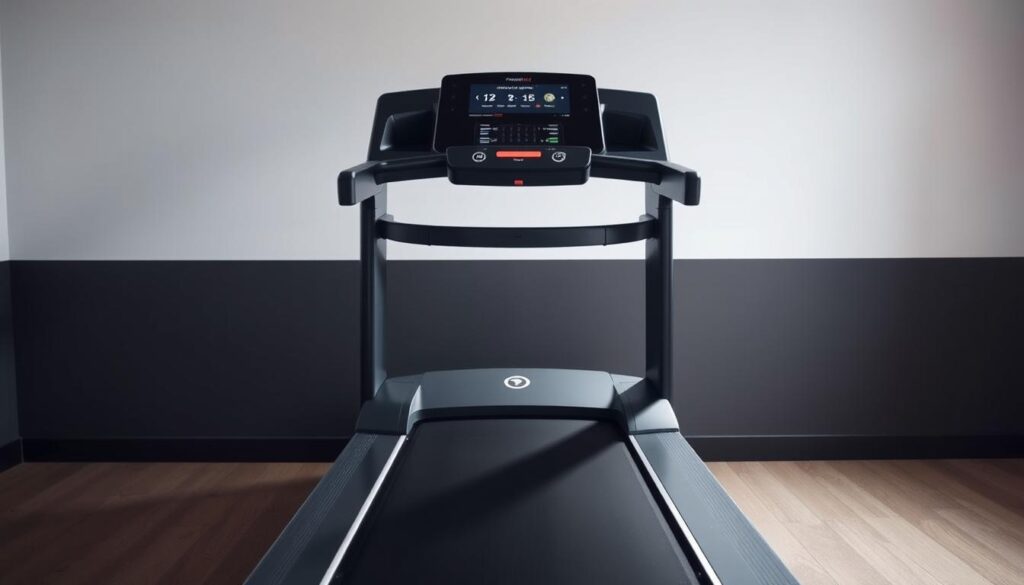
Definition and Design
At their core, treadmills combine a motorized belt with shock-absorbing decks. Compare the 3.5 CHP motor in premium models to the 1 HP in basic pads—this powers intense runs without strain. Cushioning matters too. The Sole F63 uses six compression zones to reduce joint impact by 40%.
You’ll appreciate the thoughtful engineering. Echelon Stride’s FlexSelect deck adjusts firmness for different workouts. Whether jogging or sprinting, your knees get personalized protection.
Primary Uses
These machines excel at goal-oriented training. Preset programs simulate hills or interval challenges—perfect for hitting the AHA’s 150 weekly active minutes. Heart rate grips sync with displays to track progress.
- Versatile training: From walking to HIIT sprints
- Data tracking: Calorie burn, distance, and pace metrics
- Safety features: Emergency stop clips and rail grips
For runners or HIIT enthusiasts, nothing matches this level of control. Your home gym gains a professional-grade tool.
Walking Pad vs Treadmill: Key Differences
Fitness isn’t one-size-fits-all, and neither are walking pads or treadmills. Their designs cater to distinct needs—whether you prioritize space-saving simplicity or high-performance training. Let’s explore how they compare in three critical areas.
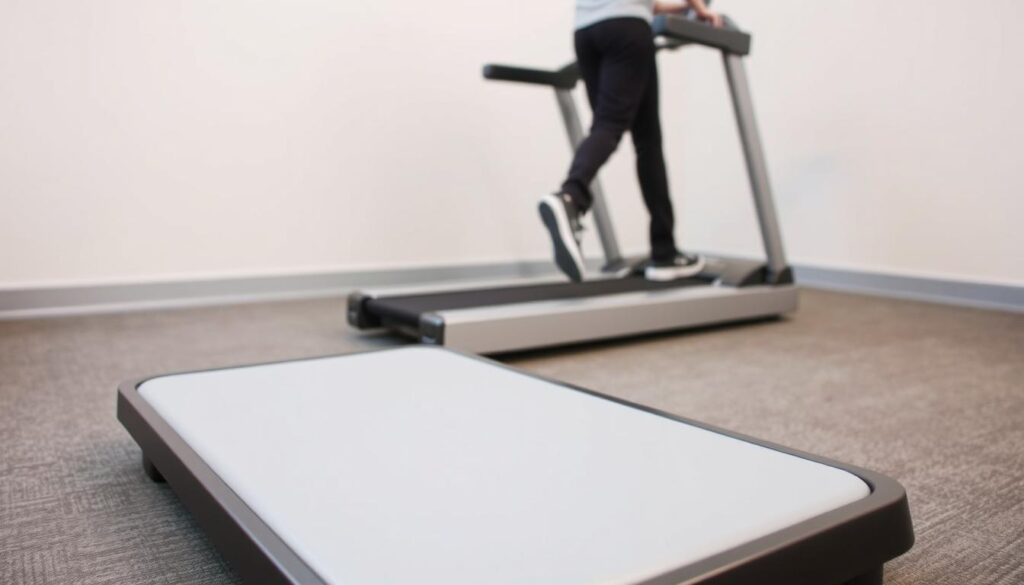
Size and Portability
Compactness defines walking pads. Models like the WalkingPad P1 measure just 56 inches long—nearly half the length of standard treadmills. Foldable designs, such as the Redliro Walker, stand vertically against walls, freeing floorspace.
Treadmills, like the NordicTrack 1750, demand more room with 80-inch+ footprints. Their sturdy frames support intense workouts but require dedicated space. Consider ceiling height too—some incline models extend upward.
Speed and Incline Options
Walking pads typically offer 0.5–3.75 MPH, ideal for casual strides or under-desk movement. Treadmills, however, span 0–12 MPH, accommodating sprints and interval training.
Incline capabilities vary widely. Premium treadmills feature 10–15% incline settings for hill simulations. Most pads skip this feature, focusing on low-impact walks.
Features and Controls
- Control simplicity: Pads use remotes or motion sensors; treadmills boast touchscreens with preset programs.
- Safety: Treadmills include handrails and emergency stops. Pads rely on user balance—better for steady-paced users.
- Data tracking: Treadmills display metrics like calorie burn. Pads often sync with apps for basic stats.
Your choice hinges on whether you value minimalism or versatility. Both excel—just in different ways.
Benefits of a Walking Pad
Compact fitness solutions bring big benefits without taking up much room. Walking pads excel in three areas: maximizing small areas, saving money, and blending into your daily workflow. Let’s explore why they’re a smart pick for modern lifestyles.
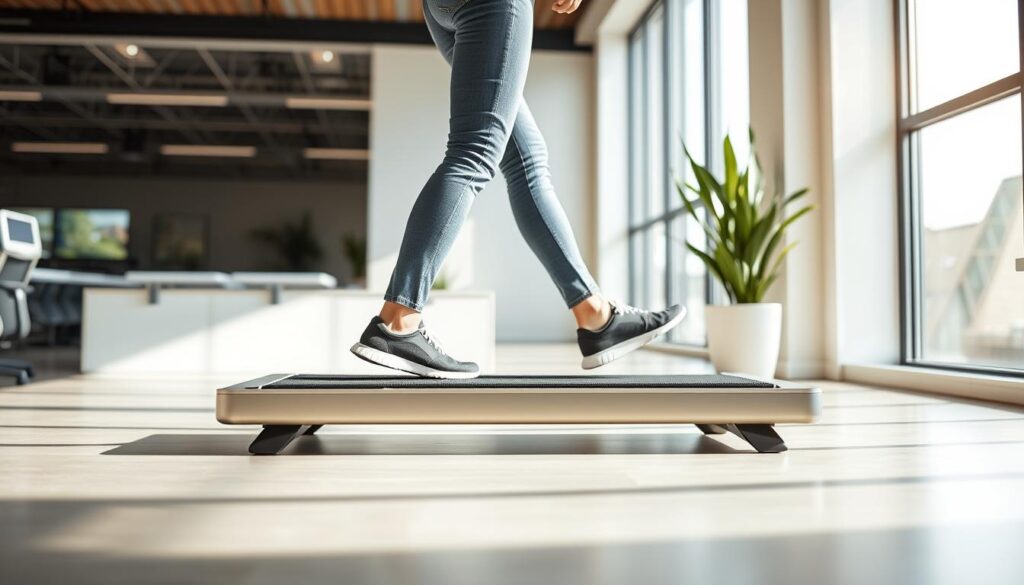
Space Efficiency
Living in a studio or shared home? A walking pad like the MotionGrey Eco Slim folds vertically, needing just 12 inches of depth when stored. Compare that to traditional machines, which often dominate entire corners.
Garage Gym Reviews highlight the “little assembly required” advantage—most models unfold ready-to-use. No bulky frames or complicated setups. Just step on and walk.
Cost-Effectiveness
At $499, the WalkingPad P1 costs 75% less than premium treadmills. Over a year, that’s roughly the price of two gym memberships—but with 24/7 access.
- Budget-friendly: No recurring fees or travel costs.
- Energy-efficient: Uses less power than motorized alternatives.
Under-Desk Convenience
Stanford research links movement to sharper focus. A walking pad under your desk lets you hit 5,000 steps during work hours. Silent operation keeps calls interruption-free.
For remote workers, it’s a game-changer. Swap your chair for slow strides and watch productivity—and step counts—rise.
Benefits of a Treadmill
Serious trainers know treadmills offer more than just a moving belt. These machines blend durability with smart engineering, supporting everything from gentle rehab walks to heart-pumping sprints. Whether you’re training for a 5K or prioritizing joint health, their versatility shines.
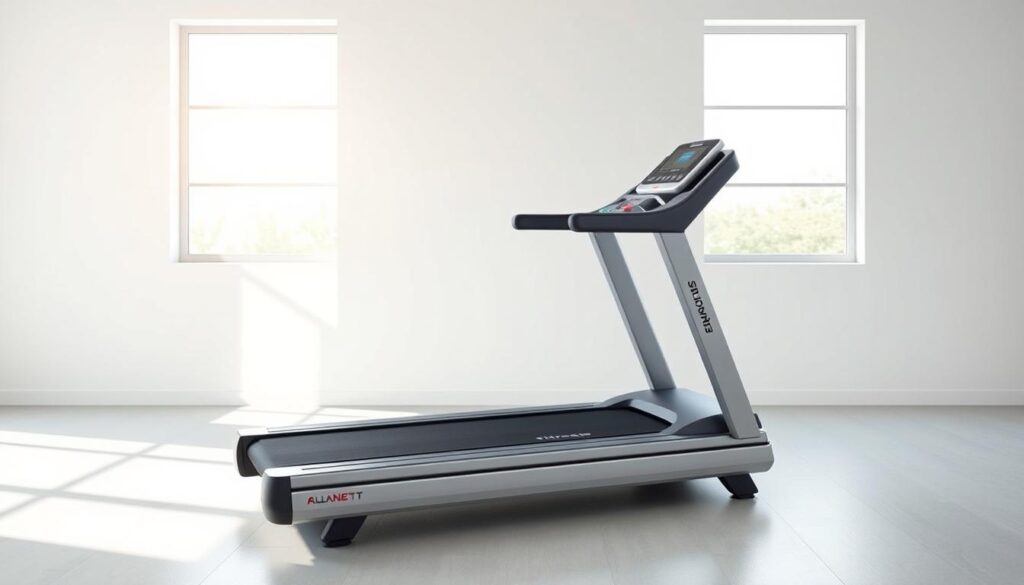
Versatility
A treadmill adapts to your goals. Interval workouts? The NordicTrack 1750’s iFit programs auto-adjust speed and incline for HIIT sessions. Recovering from injury? Controlled inclines reduce strain while building strength.
Calorie burn scales with effort. At 6 MPH, you’ll torch 2.5× more calories than a walking pad’s max speed. It’s ideal for progressive training.
Advanced Features
Premium models like the Sole F63 invest in your comfort. Their deck cushioning absorbs 40% of joint impact—critical for long-term heart health. Compare that to basic pads with minimal shock absorption.
Durability matters too. NordicTrack’s 10-year frame warranty outlasts walking pads’ typical 1-year coverage. You’re investing in years of reliable features.
Safety and Stability
Handrails and emergency stop clips prevent falls, especially useful for families. The Echelon Stride’s wide belt (22” vs. pads’ 17”) accommodates natural strides without wobbling.
For seniors or balance-conscious users, these features provide confidence. Every step stays steady, even at higher speeds.
Who Should Choose a Walking Pad?
Urban living often means making smart compromises with square footage. A walking pad solves the space-versus-fitness dilemma for specific lifestyles. Consider whether these profiles match your needs before investing.
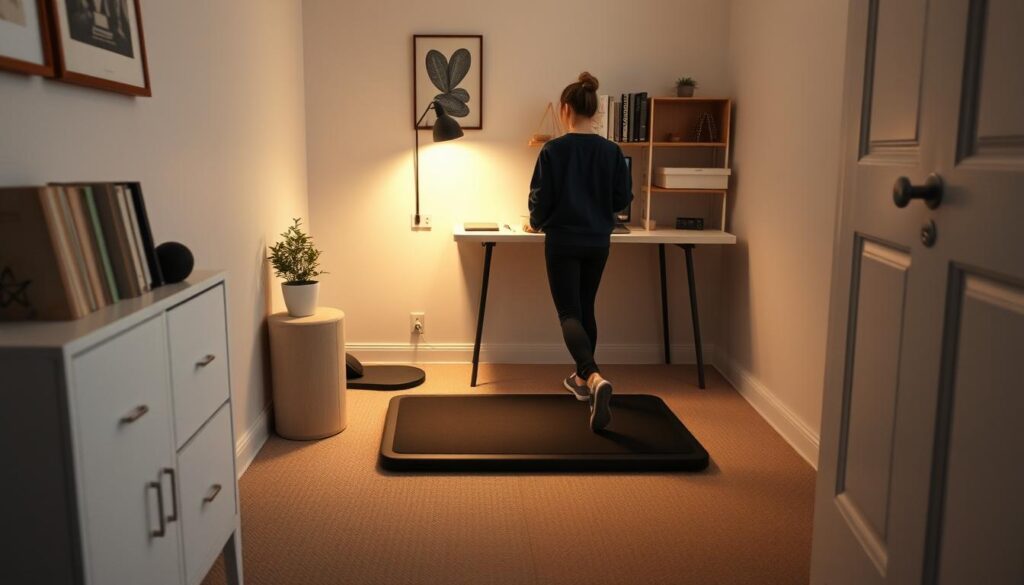
Space-Constrained Users
Apartments under 500 sq ft demand creative solutions. At just 5″ tall, models like the WalkingPad P1 slide under beds or sofas. You’ll appreciate how it disappears when not in use.
Compare this to traditional machines needing 30+ sq ft. For city dwellers, every inch counts. Foldable designs like the Redliro Walker stand vertically against walls—perfect for studio living.
Work-from-Home Professionals
Remote work blends movement with productivity. A walking pad under your desk adds 5,000 steps during meetings. Pair it with an adjustable standing desk for seamless transitions.
- Time-efficient: Multitask without gym commutes
- Silent operation: 45dB noise levels won’t disrupt calls
- MotionGrey integration: Syncs with ergonomic workstations
Budget-Conscious Buyers
The $300-$600 range makes this an accessible option. For context, that’s 75% less than premium treadmills. Over two years, you’d save enough for a quality mat and resistance bands.
However, note the trade-offs. Those needing mobility assistance should consider models with handrails. Steady-paced users benefit most from this streamlined approach.
Still deciding? Our walking pad versus treadmill guide breaks down more scenarios. Choose what fits your home and habits—not just today, but for years ahead.
Who Should Choose a Treadmill?
Training intensity often dictates the right equipment choice. When your fitness goals involve running intervals or training for races, a treadmill becomes more than convenient—it’s essential. These machines meet demanding workouts where compact alternatives fall short.
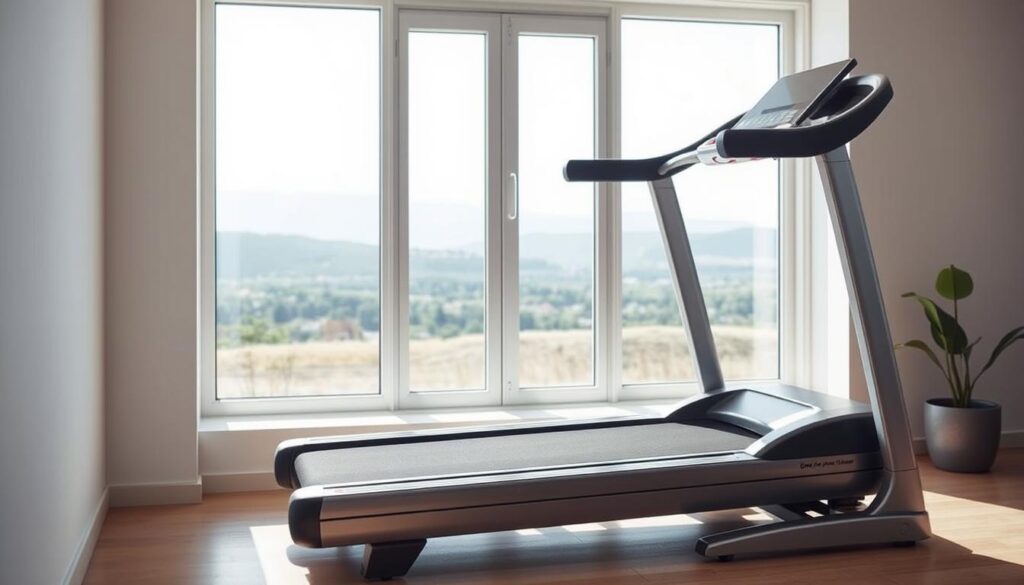
Runners and Fitness Enthusiasts
Serious runners need space to stride naturally. Garage Gym Reviews confirms 55″+ belts prevent cramped gaits during sprints. The NordicTrack 1750 delivers this with a 60″ running surface, accommodating everything from recovery jogs to 7-minute mile paces.
Marathon trainers benefit from decline settings (-3% to 15% on premium models) that simulate downhill terrain. This builds quad strength while reducing injury risk—something basic walking pads can’t offer.
Home Gym Owners
Multi-user households appreciate versatility. One treadmill can serve a teen’s HIIT sessions and a parent’s physical therapy walks. Weight capacities up to 400 lbs (vs. 220 lbs on most pads) ensure longevity for diverse users.
For dedicated gym spaces, these machines become centerpieces. Their durability justifies the investment—10-year frame warranties outlast cheaper alternatives. You’re building a long-term training partner, not just a seasonal tool.
Users Needing Safety Features
Handrails provide crucial support for rehab patients or balance-conscious seniors. The Echelon Stride’s wide belt (22″) accommodates cautious strides without instability. Emergency stop clips add peace of mind during solo workouts.
Physical therapists often recommend cushioned decks like Sole F63’s. Their shock absorption reduces joint impact by 40% compared to hard surfaces. When health conditions demand careful movement, these differences matter.
Your fitness goals deserve equipment that grows with you. Whether training for a 5K or managing arthritis, a quality treadmill adapts where simpler options can’t.
Conclusion
Finding the right equipment depends on your space, budget, and fitness goals. Compact options excel in small homes, while full-sized machines offer advanced training features. Both help you hit the AHA’s recommended 150 active minutes weekly.
For combating sedentary habits, slim designs fit seamlessly into daily routines. Those prioritizing intense workouts benefit from robust builds and customizable programs. Remember, consistency matters more than complexity.
Before deciding, consult a healthcare provider if you have mobility concerns. Your health journey deserves thoughtful choice. Whether you opt for minimalist movement or comprehensive training, the best pick aligns with your lifestyle.
Keep these factors in mind:
- Space: Measure your available area
- Intensity: Match equipment to your workout style
- Budget: Balance cost with long-term value
The rightfitnesstool should inspire you to move—not gather dust.
